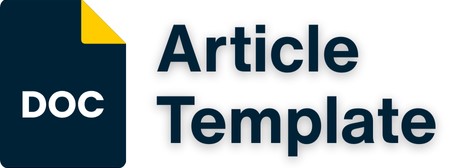DIGITALIZATION OF INFORMATION TRANSPARATION OF INDONESIAN OIL PRODUCTS EXPORT BY THREE MAIN DESTINATION COUNTRIES (JAPAN, SOUTH KOREA AND CHINA) THE PERIOD 2002-2020
Keywords:
Petroleum ExportAbstract
ABSTRACT
Digitization is the use of digital technology to change an export model in decision
making through research results related to the development and value of the
contribution of Indonesia's petroleum exports according to the three main
destination countries (Japan, South Korea and China) for the period 2002-2020
where for Japan the average destination country is Japan. the average fluctuating
trend fell by 13% with an average export value of 575 (billion US$) for South
Korea an average development of 0.4% with an export value of 229.6 (billion
US$) and for destination countries China an average the average development
has increased by 25.7% with an export value of 203.5 (billion US$). Meanwhile,
the contribution of each destination country (Japan, South Korea and China) to
the total value of Indonesia's oil exports for the period 2002-2020 where the
average contribution of Japan was 22.9% for South Korea, 11.6% for destination
countries. China's 8.6% of research results can be used as a form of transparency
through digital information so that it can encourage the government to make
appropriate decisions for the stability of the nation's economy.
References
Archibald Damar, 2011. International Economics, Edisi 2. BPFE-UGM.
Yogyakarta
Boediono, 2000. International Economics. BFFE. Yogyakarta
Mankiw, N. Gregory, 2006. Introduction to Macroeconomic Theory. Edisi Ketiga.
Salemba Empat. Jakarta
Rizky Wicaksono, 2017. Software Engineering. Seribu Bintang. Jakarta
Sadono Sukirno, 2016. Introductory Theory to Macroeconomics. Rajawali Press.
Yogyakarta
Salvatore, 1997. International Economics. Erlangga. Jakarta
26,7
37,8
47,8
59,8
47,5
50,4 52,1
24,6 22,9
25,8
18,7
7,1 5,5 6,1
0,2 0,3 0,2 0,4 0,3
27,2
16,9 15,4
7,2 8,6 7,4 6,8
13,9
10,8 8,3 9,5
4,3
7,7
11,1
19,1
9,3
14,4 12,9
9,0
6,2
11,5 9,1 8,0 8,8
5,6 5,5
11,6
15,5
8,2 6,8
15,6
2,9 3,9 5,4
10,1
13,4
5,6
8,8
2002 2003 2004 2005 2006 2007 2008 2009 2010 2011 2012 2013 2014 2015 2016 2017 2018 2019 2020
Kon_Jepang Kon_Korea Selatan Kon_Tiongkok
7
Siti Hodijah, 2016. Analysis of the influence of exports and imports on economic
growth in Indonesia. Journal of Regional Development and Financing
Perspectives 3 (3), 175-194, Google Scholar.
Sugiyono, 2012. Quantitative and Qualitative Research Methods. Alfabeta.
Bandung
Sonia, A., & Setiawina, N, 2016. The Effect of Exchange Rate, Jub and Inflation
Rate on Indonesia's Exports, Imports and Foreign Exchange Reserves. EJurnal Ekonomi. https://ojs.unud.ac.id
Tambunan, 2001. Indonesian Economy Theory and Empirical Findings. Ghalia
Indonesia. Jakarta
Downloads
Published
How to Cite
Conference Proceedings Volume
Section
License
ECOSIA is licensed under a Creative Commons Attribution- 4.0 International Public License (CC - BY).


